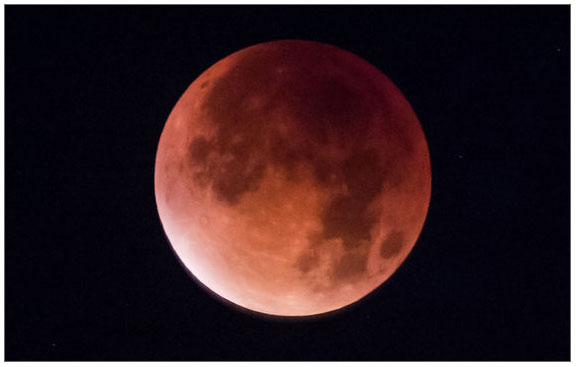On January 31, stargazers around the world will be treated to a rare event when a blue moon, supermoon, and a total lunar eclipse will occur all at once.
Referred to as a “Super Blue Blood Moon,” this trifecta of events will occur in the early morning hours of Wednesday, and although North Carolinians won’t have the greatest view of the eclipse itself, it’s certainly worth a look up to see these unusual factors combine.
If you’re not familiar with the term Super Blue Blood Moon, don’t feel too badly, as the last time a blue moon and total lunar eclipse aligned in the United States was in March of 1866.
Nevertheless, it helps to understand the three moving parts of this occurrence to fully enjoy the upcoming show, which is the first major astronomical event of 2018.
Blue Moon – A blue moon is when there is a second full moon in a calendar month. In this case, the last full moon was on New Year’s Day, and the second full moon for January is slated for January 31.
This occurs, on average, once every 2.7 years, so if someone uses the phrase “once in a blue moon,” they are literally referring to something that happens every 32 months or so.
Supermoon – A supermoon occurs when a full moon is at its closest point to the earth. When this happens, the moon can appear roughly 30 percent brighter and up to 14 percent larger than a typical full moon. Supermoons happen a little more often than eclipses and blue moons, and occur roughly 4-6 times per year.
Lunar Eclipse / Blood Moon – A lunar eclipse or blood moon occurs when the earth and the moon align just right so that the earth casts a shadow on the moon, creating a reddish tint, (hence the “blood moon” moniker.) Though it will not be all that visible for areas on the Eastern Seaboard like Hatteras and Ocracoke Islands, you will get a great view of the eclipse if you are planning a trip west tomorrow. NASA reports that the West Coast, Alaska and Hawaii will have a spectacular view of totality from start to finish.
Lunar eclipses are rare, but not as rare as other celestial events. They happen about once or twice a year, and the next one that will be visible in North America will occur on Jan. 21, 2019.
As for what you will be able to see on the East Coast, it all depends on your ability to find a spot without trees and other obstructions, as well as your ability to wake up early.
Gordon Johnston, program executive and lunar blogger at NASA Headquarters in Washington, advises that East Coast folks will want to head outside in the minutes leading up to sunrise. “…Your best opportunity if you live in the East is to head outside about 6:45 a.m. and get to a high place to watch the start of the eclipse—make sure you have a clear line of sight to the horizon in the west-northwest, opposite from where the sun will rise,” he said in a recent article.
The best time to look up will be between 6:48 a.m. and the morning sunrise at 7:15 a.m. Once the lunar eclipse begins, local viewers may notice a darker shade of gray with a slight reddish hue.
No glasses are required for staring, and if you’d prefer not to get out of your pajamas, you can also view the show online at https://moon.nasa.gov/.. Assuming that the weather cooperates, NASA will share views of the eclipse from centers in Arizona, Los Angeles, and Edwards, California.
While the Outer Banks won’t have the best vantage point of the eclipse itself, our naturally dark skies will lend themselves well to admiring the brightness and grand size of the upcoming lunar event. As such, it’s not a bad idea for sky gazers to get up a little early and take a peek.
After all, an event like this only happens once in a Super Blue Blood Moon.



